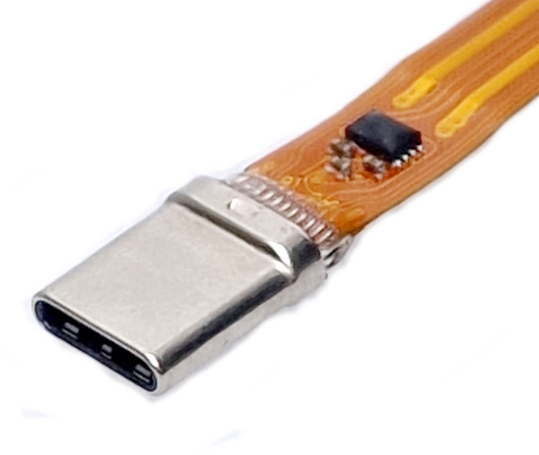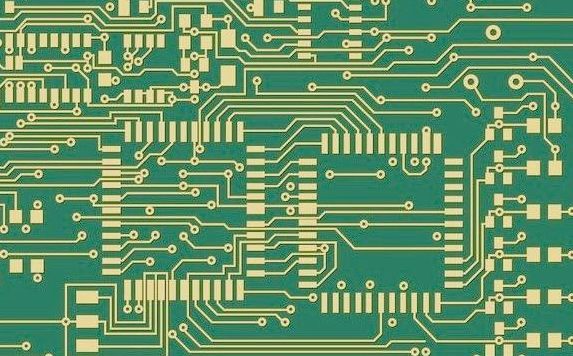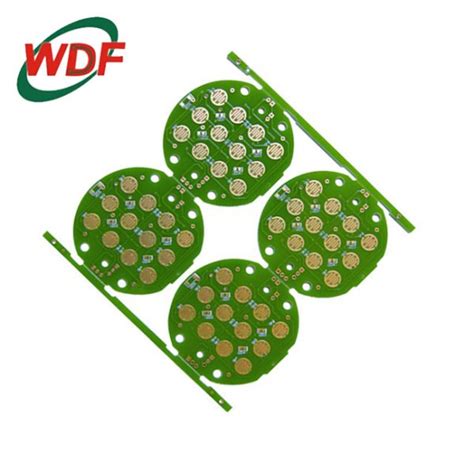Usb flex pcb
Advantages Of Using USB Flex PCBs In Modern Electronics
USB Flex PCBs, or flexible printed circuit boards, have become increasingly prevalent in modern electronics due to their numerous advantages over traditional rigid PCBs. These flexible circuits are designed to bend and conform to various shapes, making them ideal for a wide range of applications.
One of the primary benefits of USB Flex PCBs is their ability to save space and reduce weight in electronic devices.
This is particularly important in the development of compact and lightweight gadgets, such as smartphones, tablets, and wearable technology. By utilizing flexible circuits, manufacturers can design more streamlined and efficient products without compromising on functionality.
In addition to space-saving benefits, USB Flex PCBs offer enhanced durability and reliability.
Traditional rigid PCBs are prone to damage from vibrations and mechanical stress, which can lead to device failure. However, flexible circuits are designed to withstand such stresses, making them more suitable for applications that require frequent movement or exposure to harsh environments. This increased durability translates to longer-lasting devices and reduced maintenance costs, which is a significant advantage for both manufacturers and consumers.
Another notable advantage of USB Flex PCBs is their ability to improve signal integrity and performance.
The flexible nature of these circuits allows for more precise routing of electrical signals, reducing the risk of signal interference and loss. This is particularly important in high-speed data transmission applications, where maintaining signal integrity is crucial for optimal performance. Furthermore, the use of flexible circuits can help minimize electromagnetic interference (EMI), which can negatively impact the performance of electronic devices. By reducing EMI, USB Flex PCBs contribute to the overall efficiency and reliability of modern electronics.
The versatility of USB Flex PCBs also extends to their ease of integration into various electronic systems.
These flexible circuits can be easily incorporated into complex assemblies, allowing for more innovative and compact designs. This adaptability is particularly beneficial in the development of advanced medical devices, automotive systems, and aerospace technology, where space constraints and performance requirements are critical. Moreover, the ability to fold and bend USB Flex PCBs enables the creation of more ergonomic and user-friendly devices, enhancing the overall user experience.
Cost-effectiveness is another significant advantage of USB Flex PCBs.
While the initial design and manufacturing process may be more complex compared to traditional rigid PCBs, the long-term benefits often outweigh the initial investment. The reduced need for connectors and interconnects, combined with the potential for automated assembly, can lead to significant cost savings in the production process. Additionally, the increased reliability and durability of flexible circuits can result in lower warranty and repair costs, further contributing to their cost-effectiveness.
In conclusion, the advantages of using USB Flex PCBs in modern electronics are numerous and far-reaching. Their ability to save space and reduce weight, combined with enhanced durability and reliability, makes them an ideal choice for a wide range of applications. Improved signal integrity and performance, ease of integration, and cost-effectiveness further contribute to their growing popularity in the electronics industry. As technology continues to advance, the demand for flexible circuits is expected to increase, driving further innovation and development in this field. Consequently, USB Flex PCBs are poised to play a crucial role in shaping the future of modern electronics.

Design Considerations For USB Flex PCBs
When designing USB flex PCBs, several critical considerations must be taken into account to ensure optimal performance and reliability. Flex PCBs, or flexible printed circuit boards, offer unique advantages such as reduced weight, space savings, and enhanced flexibility, making them ideal for a variety of applications, including USB devices. However, the design process for USB flex PCBs involves meticulous planning and attention to detail to address the specific challenges associated with their flexible nature.
One of the primary considerations in designing USB flex PCBs is the selection of appropriate materials.
The choice of substrate material is crucial, as it must provide the necessary flexibility while maintaining electrical integrity. Polyimide is a commonly used material due to its excellent thermal stability, mechanical strength, and flexibility. Additionally, the copper used for the conductive traces must be carefully chosen to balance flexibility with conductivity. Thinner copper layers are often preferred to enhance flexibility, but they must still be thick enough to handle the required current without excessive resistance.
Another important aspect is the layout and routing of the traces.
In USB flex PCBs, signal integrity is paramount, especially given the high-speed nature of USB communication. To minimize signal degradation and electromagnetic interference (EMI), designers must adhere to best practices such as maintaining consistent trace widths, using controlled impedance traces, and ensuring proper spacing between signal lines. Furthermore, the use of ground planes and shielding can help mitigate EMI and improve overall signal quality.
The mechanical design of USB flex PCBs also demands careful consideration.
Flex PCBs are often subjected to bending, twisting, and other mechanical stresses, which can lead to fatigue and failure if not properly addressed. To enhance durability, designers should incorporate features such as strain reliefs, which distribute mechanical stress more evenly across the board. Additionally, the bend radius of the flex PCB should be optimized to prevent excessive stress on the conductive traces and substrate material. It is generally recommended to avoid sharp bends and to use gradual curves instead.
Thermal management is another critical factor in the design of USB flex PCBs.
The compact nature of these boards can lead to heat buildup, which can adversely affect performance and reliability. Effective thermal management strategies, such as the use of thermal vias, heat sinks, and proper ventilation, are essential to dissipate heat and maintain optimal operating temperatures. Additionally, the choice of materials with good thermal conductivity can further enhance heat dissipation.
Manufacturability is also a key consideration in the design of USB flex PCBs.
The unique properties of flex PCBs require specialized manufacturing processes, and designers must work closely with manufacturers to ensure that the design can be produced reliably and cost-effectively. This includes considerations such as panelization, which involves arranging multiple flex PCBs on a single panel to optimize material usage and reduce manufacturing costs. Additionally, designers should be aware of the limitations of the manufacturing process, such as minimum trace widths and spacing, to ensure that the design can be fabricated accurately.
In conclusion, the design of USB flex PCBs involves a complex interplay of material selection, electrical and mechanical design, thermal management, and manufacturability. By carefully considering these factors and adhering to best practices, designers can create USB flex PCBs that offer the desired performance, reliability, and durability for a wide range of applications. The unique advantages of flex PCBs, combined with thoughtful design, can lead to innovative and efficient solutions in the ever-evolving landscape of electronic devices.

Common Applications Of USB Flex PCBs In Consumer Devices
USB flex PCBs, or flexible printed circuit boards, have become increasingly prevalent in consumer devices due to their versatility, durability, and ability to conform to various shapes and sizes. These attributes make them particularly suitable for a wide range of applications, enhancing the functionality and reliability of modern electronic gadgets.
One of the most common applications of USB flex PCBs is in smartphones.
As these devices continue to evolve, becoming thinner and more feature-rich, the internal components must also adapt. USB flex PCBs offer a solution by providing a flexible, lightweight, and compact means of connecting various internal components, such as the battery, display, and camera modules. This flexibility not only saves space but also allows for more innovative designs and improved performance.
In addition to smartphones, USB flex PCBs are widely used in wearable technology.
Devices such as smartwatches and fitness trackers require compact and flexible circuitry to fit within their small, often curved, form factors. The ability of USB flex PCBs to bend and twist without breaking makes them ideal for these applications, ensuring that the devices remain functional and reliable even under constant movement and stress. Furthermore, the lightweight nature of flex PCBs contributes to the overall comfort and usability of wearable devices, which is crucial for user satisfaction.
Another significant application of USB flex PCBs is in the realm of portable computing devices, such as laptops and tablets.
These devices demand high performance and reliability while maintaining a slim and lightweight profile. USB flex PCBs help achieve this by providing a flexible and efficient means of connecting various components, such as the motherboard, display, and peripheral ports. This not only enhances the overall performance of the device but also allows for more innovative and ergonomic designs, catering to the ever-evolving needs of consumers.
Moreover, USB flex PCBs are increasingly being utilized in the automotive industry, particularly in the development of advanced driver-assistance systems (ADAS) and infotainment systems.
These applications require robust and reliable circuitry that can withstand the harsh conditions of the automotive environment, including extreme temperatures and vibrations. The flexibility and durability of USB flex PCBs make them well-suited for these demanding applications, ensuring that the systems remain functional and reliable over the lifespan of the vehicle. Additionally, the compact nature of flex PCBs allows for more efficient use of space within the vehicle, enabling the integration of more advanced features and technologies.
In the realm of consumer electronics, USB flex PCBs are also commonly found in gaming consoles and accessories.
These devices require high-speed data transfer and reliable connections to ensure optimal performance and user experience. The flexibility and durability of USB flex PCBs make them ideal for these applications, providing a robust and efficient means of connecting various components and peripherals. This not only enhances the overall performance of the gaming device but also contributes to a more immersive and enjoyable gaming experience for the user.
In conclusion, USB flex PCBs have become an integral component in a wide range of consumer devices, from smartphones and wearables to portable computing devices and automotive systems. Their flexibility, durability, and compact nature make them well-suited for these applications, enabling more innovative designs and improved performance. As technology continues to advance, the demand for USB flex PCBs is likely to grow, further solidifying their importance in the development of modern consumer electronics.
Manufacturing Challenges And Solutions For USB Flex PCBs
USB flex PCBs, or flexible printed circuit boards, have become increasingly integral in modern electronic devices due to their ability to bend and conform to various shapes. This flexibility allows for more compact and innovative designs, particularly in portable and wearable technology. However, the manufacturing of USB flex PCBs presents several challenges that require specialized solutions to ensure reliability and performance.
One of the primary challenges in manufacturing USB flex PCBs is the selection of appropriate materials.
Unlike rigid PCBs, which use materials like FR4, flex PCBs require substrates that can withstand repeated bending and flexing without degrading. Polyimide is commonly used due to its excellent thermal stability and mechanical properties. However, the choice of adhesive and copper foil also plays a crucial role. The adhesive must provide strong bonding while maintaining flexibility, and the copper foil must be thin enough to bend without cracking but thick enough to carry the necessary electrical current.
Another significant challenge is the precision required in the manufacturing process.
Flex PCBs often have intricate designs with fine lines and spaces, which necessitates high-precision equipment and processes. Photolithography, a process used to transfer circuit patterns onto the substrate, must be meticulously controlled to ensure accuracy. Any deviation can lead to defects that compromise the functionality of the PCB. Additionally, the etching process, which removes unwanted copper, must be carefully monitored to prevent over-etching or under-etching, both of which can affect the circuit’s performance.
Thermal management is also a critical concern in the manufacturing of USB flex PCBs.
The materials used in flex PCBs have different thermal expansion coefficients, which can lead to delamination or warping if not properly managed. To address this, manufacturers often use a combination of thermal profiling and controlled cooling processes to ensure that the PCB maintains its integrity throughout the manufacturing cycle. Moreover, the use of thermal vias and heat spreaders can help dissipate heat more effectively, thereby enhancing the reliability of the final product.
In addition to material selection and precision manufacturing, the assembly process poses its own set of challenges.
Surface mount technology (SMT) is commonly used to place components on flex PCBs, but the flexible nature of the substrate can make this process more complex. To mitigate this, manufacturers often use stiffeners, which are rigid sections added to the flex PCB to provide support during assembly. These stiffeners must be carefully designed and placed to avoid interfering with the PCB’s flexibility while providing the necessary support.
Quality control is another critical aspect of manufacturing USB flex PCBs.
Given the complexity and precision required, rigorous testing is essential to identify and rectify any defects. Automated optical inspection (AOI) and X-ray inspection are commonly used to detect issues such as misalignment, solder defects, and internal structural problems. Additionally, electrical testing ensures that the PCB meets the required performance specifications.
Despite these challenges, advancements in materials science and manufacturing technologies have led to significant improvements in the production of USB flex PCBs. Innovations such as laser direct imaging (LDI) and advanced etching techniques have enhanced precision, while new adhesive formulations and copper foils have improved flexibility and durability. Furthermore, the development of more sophisticated thermal management solutions has mitigated many of the issues related to thermal expansion and heat dissipation.
In conclusion, while the manufacturing of USB flex PCBs presents several challenges, ongoing advancements and specialized solutions have made it possible to produce high-quality, reliable products. By carefully selecting materials, employing precise manufacturing processes, and implementing rigorous quality control measures, manufacturers can overcome these challenges and meet the growing demand for flexible electronic solutions.







